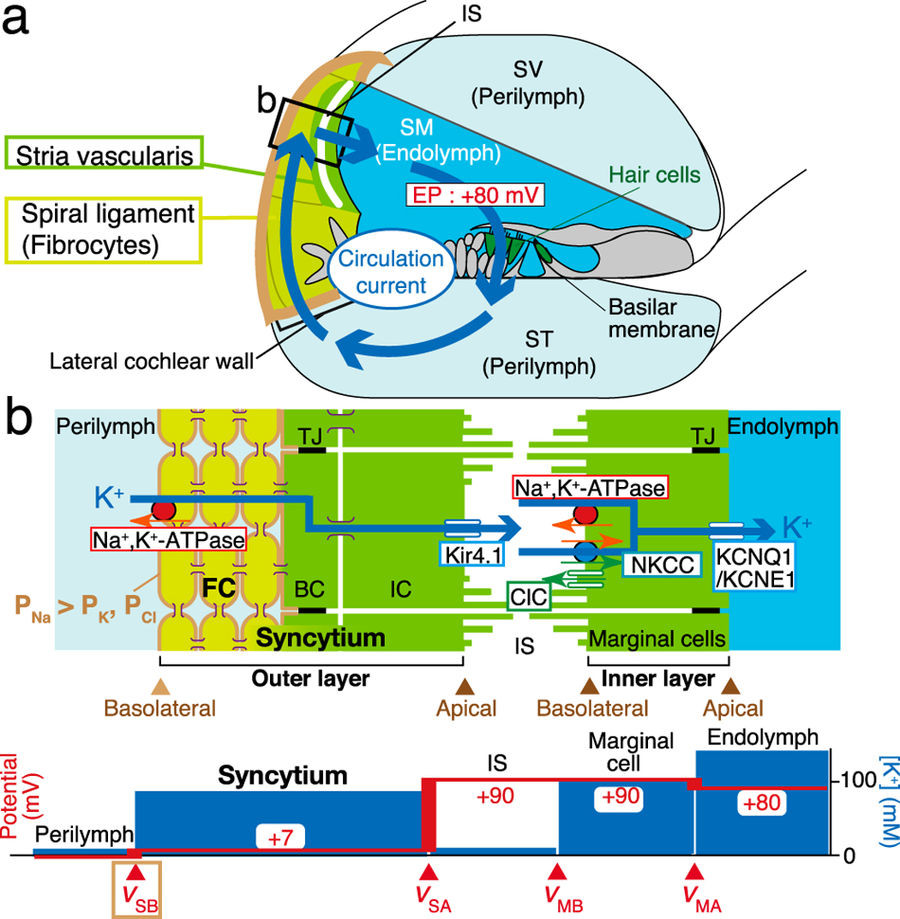哺乳類の蝸牛の恒常性維持に不可欠な定常電流の成立機構:コンピュータモデリングによる解析と特殊なイオン輸送の必要性
Computer modeling defines the system driving a constant current crucial for homeostasis in the mammalian cochlea by integrating unique ion transports
2017年8月25日 npj Systems Biology and Applications 3, Article number:24 (2017) doi:10.1038/s41540-017-0025-0
感覚神経科学:イオンに蝸牛の迷路を通過させる

生きた哺乳類の蝸牛の内部には、イオン電流が常時、一定方向に流れている。このユニークな「循環電流」は、音刺激により発生する原子レベルの振動を電子信号に変換する感覚細胞の高感度性に寄与するものである。循環電流は、多層性の上皮組織の中を通過するイオン輸送に依存していると指摘されている。新潟大学の日比野浩教授率いるチームは、イオン電流を生体内で測定することが不可能であるため、この循環電流がどのように確立されるかの解明に理論的アプローチを使って挑んでいる。以前に同チームが構築した概念的な数理モデルには、欠点があった。それは、最近、実験結果より推定された仕組み — 特異な性質を示す上皮組織膜のイオン輸送機構 — が加えられていなかったことである。そこで今回、数理モデルにてこの部分を他の膜の輸送機構に結合した上で共役させたところ、測定値が再現された。この研究は、20年近く謎であった循環電流の駆動システムを包括的に明らかにし、聴覚の成立機構の理解を前進させるものである。
Sensory neuroscience: let ion run through a cochlear labyrinth
In in vivo mammalian cochlea, ionic current constantly and unidirectionally flows—this unique “circulation current”, which contributes to high sensitivity of sensory cells transducing atomic scale acoustic vibrations to electrical signals, likely depends upon ion transports across a multiple-layered epithelial tissue. To determine how the circulation current is established, a team conducted by Hiroshi Hibino at Niigata University in Japan used a theoretical approach, because ionic currents are unmeasurable in vivo. A conceptual computational model they previously developed lacked involvement of an epithelial tissue membrane recently found to show unusual ion transport profile; integration and coupling of this element to other membrane transport machineries resulted in reproducing experimental measurements. This work defines the comprehensive system driving the circulation current, which remains uncertain for nearly 20 years, and helps us to understand the mechanism for hearing.

